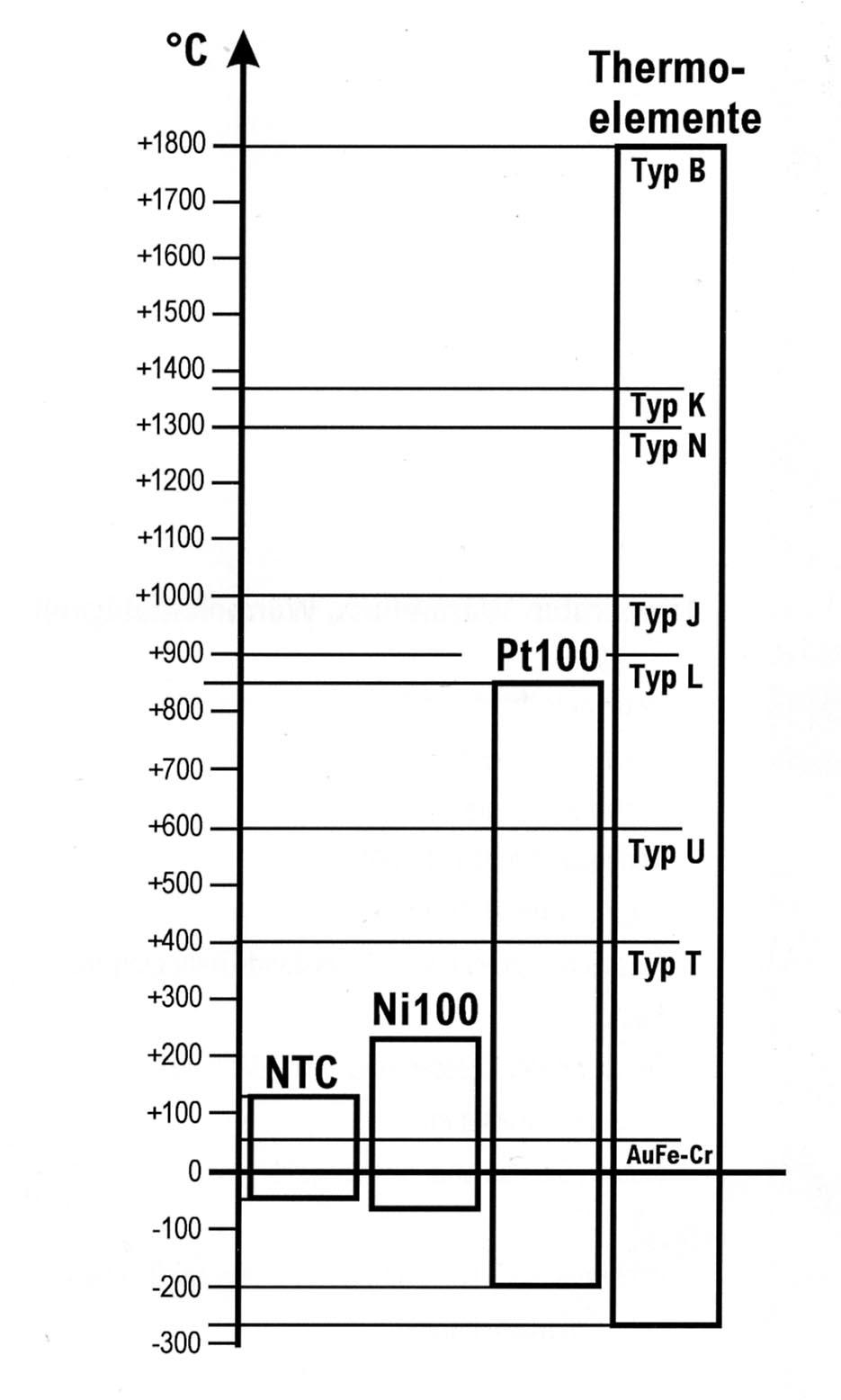Selection of a suitable temperature sensor
Author: Hans-Jürgen Schwarz
English version by Sandra Leithäuser
back to Temperature Measurement
Abstract
The criteria for the selection of a temperature sensor, suitable for the respective measuring tasks are introduced.
Introduction
The selection of the right type of temperature sensor depends on the measuring task. Nowadays, the choice of sensors ranges from thermocouples, resistance thermometers to radiation thermometers. The general rules apply as follows:
- Thermocouples are very fast and have a wide measuring range.
- Resistance temperature detectors (RTD) are slower but more accurate.
- NTC- Sensors are quick and accurate but have a limited measuring range.
- Infrared sensor do not have any physical contact to the object to be measured, have a very small time constant, but are not dependent on the emissivity (important for correct, absolute values).
The choice of a temperature sensor should be based on the following criteria:
- Measuring range
- Accuracy
- Measuring site- design
- Response time
- Resistance
Figure 1gives an overview over the measuring ranges of the different contact sensors. It shows clearly that a NTC- Sensor is adequate for most measuring tasks in conservation and the preservation of cultural objects.
Time response
An important parameter for temperature measurement is the dynamic behavior of the transmission sensors [Bernhard:2003]Title: Technische Temperaturmessung. Physikalische und meßtechnische Grundlagen, Sensoren und Meßverfahren, Meßfehler und Kalibrierung . Simplified: How long does it take, until the sensor shows the true temperature? Two values have to be defined here: T0.5 and T0.9 (according to DIN 16160, the German standards for thermometers), i.e. the time that the measuring sensor needs to reach the value to be measured at a temperature change of 50% or 90%.
. Simplified: How long does it take, until the sensor shows the true temperature? Two values have to be defined here: T0.5 and T0.9 (according to DIN 16160, the German standards for thermometers), i.e. the time that the measuring sensor needs to reach the value to be measured at a temperature change of 50% or 90%.
| Response Time | In Air (v = 1 m/s) | In Water (v = 0,4 m/s) |
| M-FR 828 | t0.5 = 12.3 s; t0.9 = 39.5 s | t0.5 = 0.9 s; t0.9 = 2.7 s |
| M-FR 845 | t0.5 = 24.8 s; t0.9 = 78.8 s | t0.5 = 1.5 s; t0.9 = 4.6 s |
Measuring of surface temperatures
For the determination of the surface temperature of building elements, the temperature sensor needs to have a very intimate contact to the surface to be measured. This may be difficult when plasters and other mineral building materials are concerned. Additionally, the sensor removes warmth from the surrounding area the larger its size becomes. Since a certain amount of time elapses, it is an advantage to stick on small area measuring sensors and to check the values with a handheld device. These sensors have a surface of just about one square centimeter and therefore the possible damage to the surface that may occur, due to the bonding may be tolerable. Thermocouple sensors are quick and have a wide measuring range. Resistance and NTC sensors are slower but more accurate.
Non-contact measuring methods with an infrared thermometer do not withdraw heat from the object, so that there are no falsified results using this method.
Literature
| [Bernhard:2003] | Bernhard, Frank (eds.) (2003): Technische Temperaturmessung. Physikalische und meßtechnische Grundlagen, Sensoren und Meßverfahren, Meßfehler und Kalibrierung, Springer, Berlin |  |
